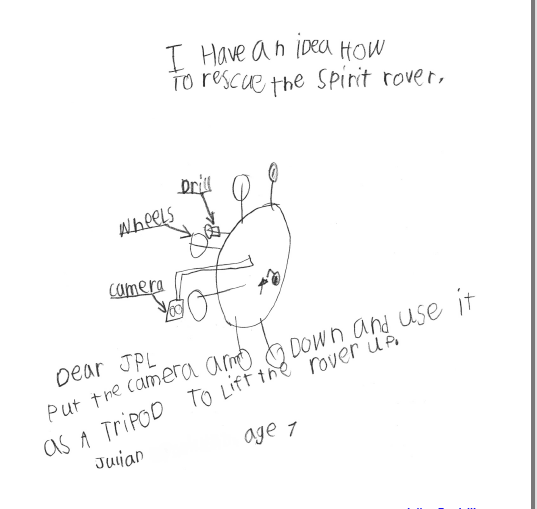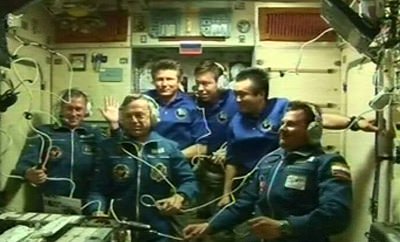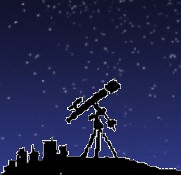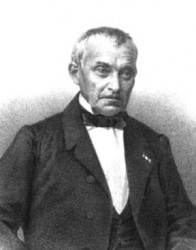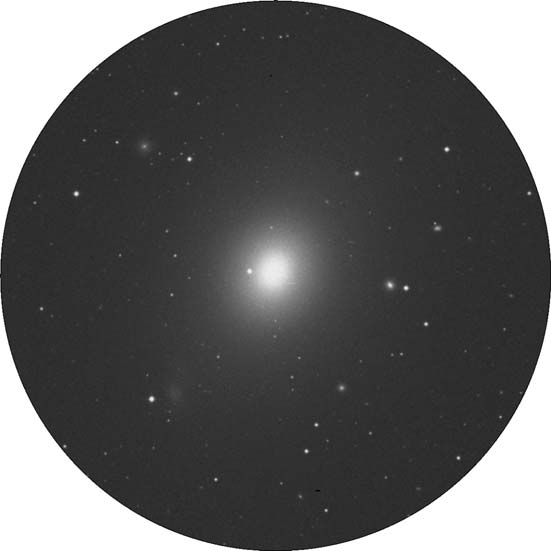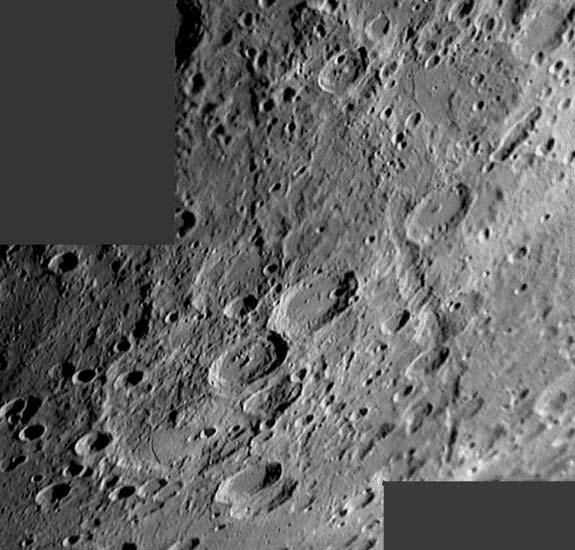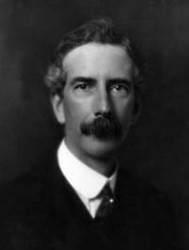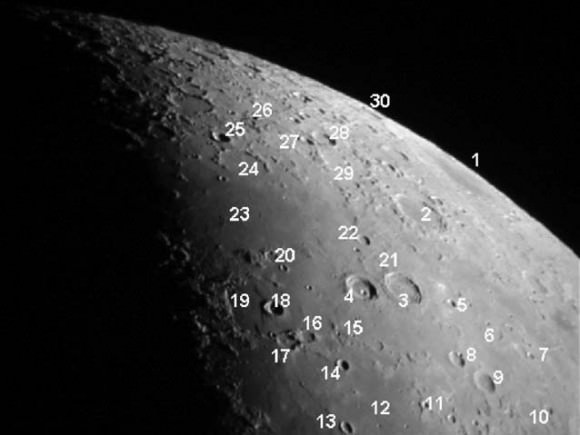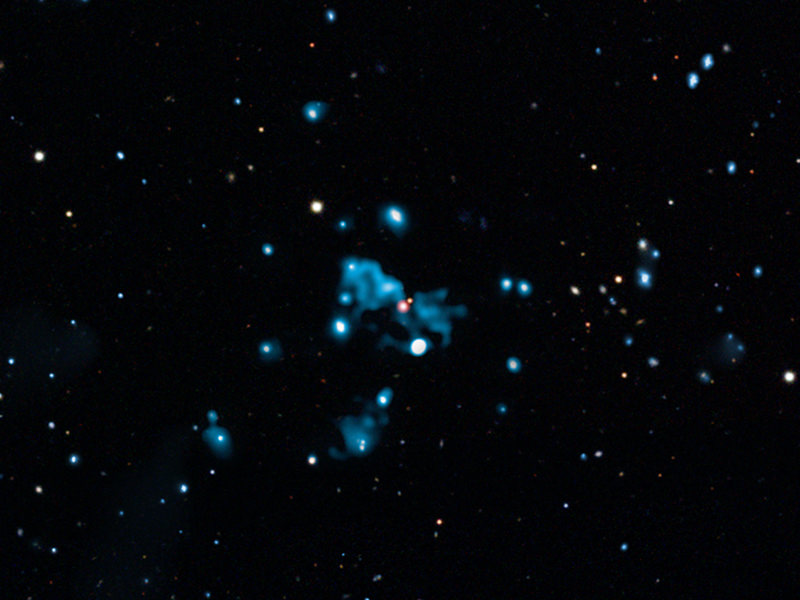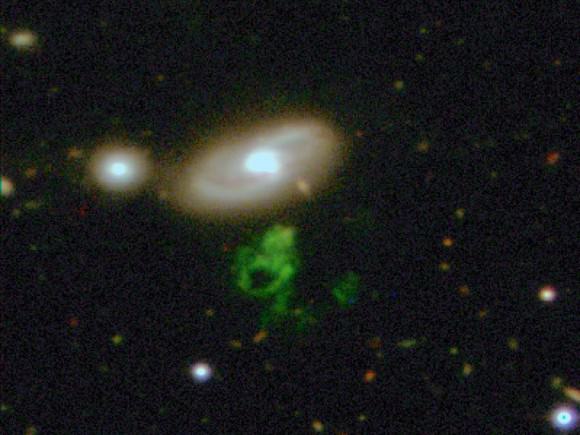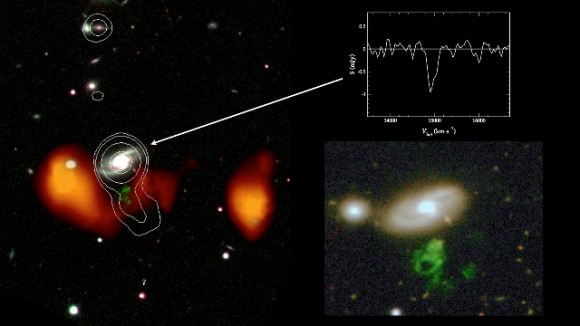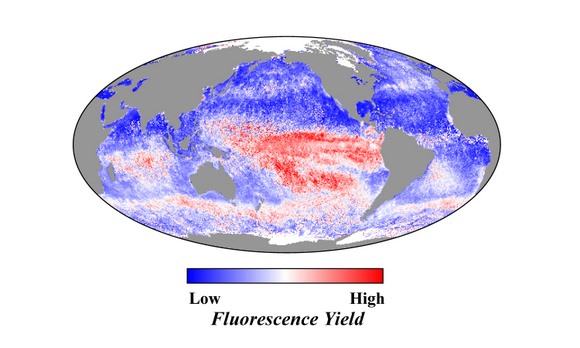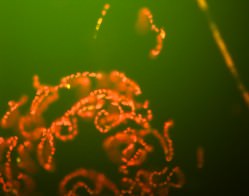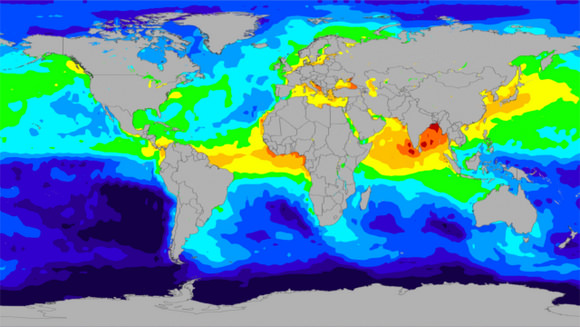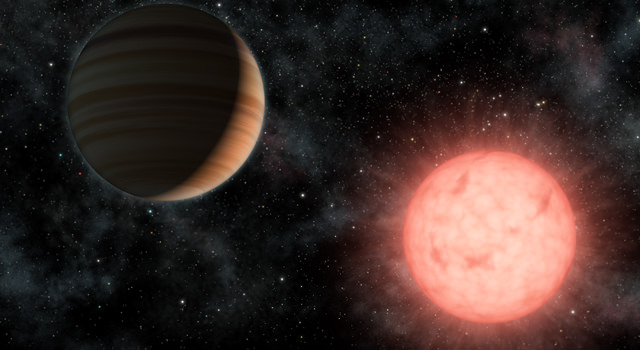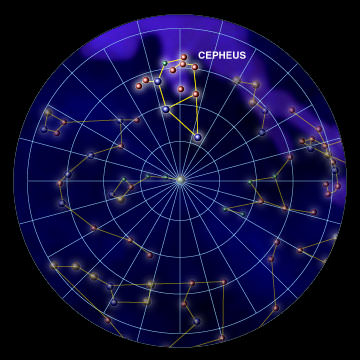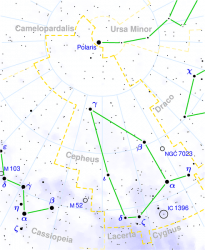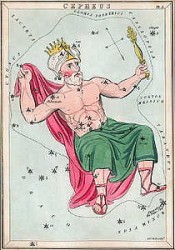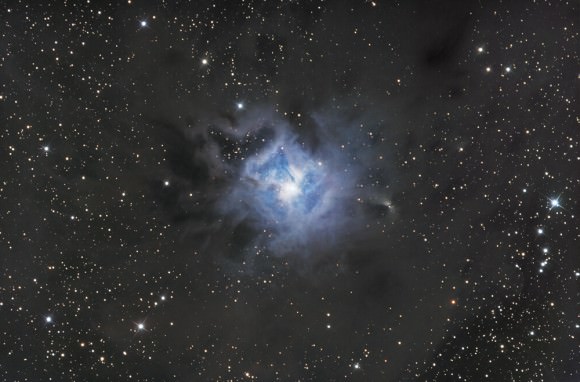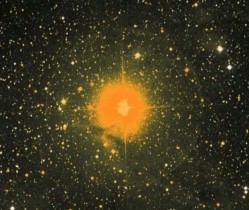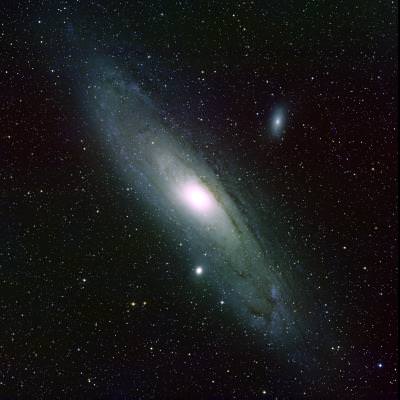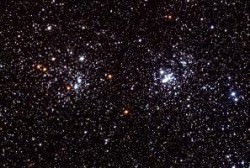[/caption]
We’re all concerned about the Spirit rover, currently stuck in some soft soil on Mars. But some people are actually working hard to figure out how to rescue the rover. That includes a 7-year old boy named Julian who sent this drawing in to JPL with his idea of how help Spirit: use the robotic arm as a “tripod” to lift the rover up and help move it out of the spot where it is embedded. Julian, you have a bright future ahead of you as an engineer! “We are getting a lot of interesting suggestions from the public,” said JPL’s John Callas, MER project manager, “and we think that’s wonderful. It shows people are interested in these rovers. We certainly are canvassing the full range of possibilities to get Spirit unstuck.”
And Callas said they are actually planning to use the robotic arm to help get Spirit unstuck, but not quite the way Julian had in mind.
“We’re doing a parallel approach,” Callas told Universe Today, “doing things both on Earth and on Mars. Spirit is using her instruments to assess the terrain and the nature of the materials where she is stuck. Just last night we made the decision to use the robotic arm to look underneath the belly of the rover to see if we can determine how the vehicle is embedded and if it may be high centered on some small rocks under the rover. We’ll also look at the wheels to see how the middle wheels are dug in.”
Callas said this is a technique the robotic arm was never designed to do. “So, we tested it first on Opportunity and it worked quite well, so that’s the plan for what we’ll do with Spirit this weekend.”
Spirit has also been busy taking remote sensing images of the surrounding terrain with all its instruments to try to characterize the soils and their properties. Callas said “soils” because there actually appears to be two different types of materials where the rover is stuck, with a different type of soil on the left side of the rover from the right.
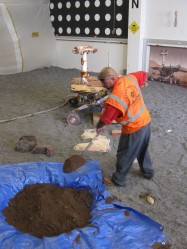
The rover team will use the data to create a soil simulant to be used in the JPL test bed, basically a large sandbox where an engineering model of the rover identical to Spirit and Opportunity can be used to simulate Spirit’s predicament. There, the team can experiment with how best to get the rover out.
However, the test has been held up because of problems with work station that controls the test facility, but Callas said they are hoping by later today (Friday) to get started with the simulations.
They’ll start by putting the simulated Mars regolith, which is called baghouse dust, (ground basaltic material, Callas said) and use enough to test just one wheel of the rover. “If it exhibits the same characteristics we’re seeing on Mars, then we’ll truck in tons of that material to do the tests with the rover,” said Callas. If not, they’ll have to go back to the drawing board.
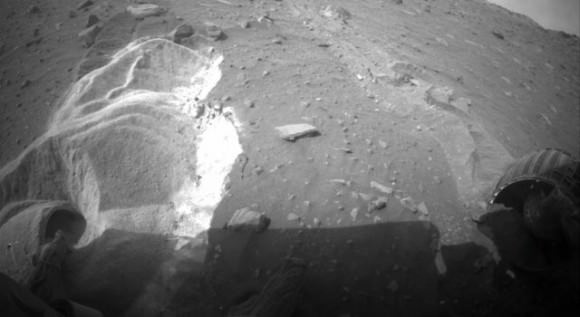
Spirit has long been without the use of her right front wheel, which doesn’t help the situation, and recently the left middle wheel was jammed, but now appears to be working again. The one piece of good news is that Mars itself provided a little help by sending a gust of wind Spirit’s way, cleaning off the solar panels, making more energy available to the rover. Spirit now has over 80% of its potential power, with 843 watt hours available, as opposed to earlier where the rover was operating at less than 200 watt hours.
Callas said he is optimistic about getting Spirit unstuck. “We saw that even on the last drive that the rover was still moving, even though it was only fractionally, based on the wheel spin. So, that tells us material is still being transported underneath the wheels. Given enough time and enough wheel spinning we should be able to get out. If that changes, if we get a situation where we have a hundred per cent slip, then we’re in trouble. But we’re not at that point yet, — even if we’re at 99.9%, that makes a big difference between 100%.”
And if this latest attempt doesn’t work, Callas says they have some other ideas up their robotic arm sleeves. “There are some exotic things we would consider if the more traditional methods don’t work,” he said. We have a lot of arrows in our quiver, or tools in our toolbelt to try first. ”
And they always have Julian to rely on, too.
Source: Interview with John Callas
Julian’s picture on Twitpic — check out the comments!

